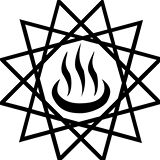by Melissa
(4th Thursday in November) According to historical sources, the Pilgrims never held an autumnal Thanksgiving feast. The Pilgrims did have a feast in 1621 near Plymouth, Massachusetts, after their first harvest. This is the feast people often refer to as “The First Thanksgiving.” This feast was never repeated, so it can’t be called the start of a tradition, nor did the colonists or Pilgrims call it a Thanksgiving Feast. Washington’s first proclamation after his inauguration as the nation’s first president in 1789 declared November 26, 1789, as a national day of “thanksgiving and prayer.” The annual presidential thanksgiving proclamations ceased for 45 years in the early 1800s. Then President Abraham Lincoln resumed the tradition in 1863. Since 1956, the fourth Thursday in November has been observed by every state (from Thanksgiving Square, http://www.thanksgiving.org/2us.html, page no longer available in 2016).
Demeter, goddess of grains, was honored at the festival of Thesmosphoria on 11-13 Pyanepsion. On the first day of the festival married women (possibility connecting childbearing and the raising of crops) would build leafy shelters and furnish them with couches made with plants. On the second day they fasted. On the third day a feast was held and offerings to the goddess Demeter were made – gifts of seed corn, cakes, fruit, and pigs. It was hoped that Demeter’s gratitude would grant them a good harvest (from Holidays on the Net, http://www.holidays.net/thanksgiving/story.htm. As a time for celebrating family, this holiday offers an excellent opportunity to honor Hestia and the hearth, as well as Demeter.
